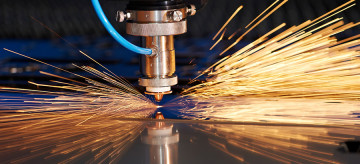- Advertising
- Bare Metal
- Bare Metal Cloud
- Benchmarks
- Big Data Benchmarks
- Big Data Experts Interviews
- Big Data Technologies
- Big Data Use Cases
- Big Data Week
- Cloud
- Data Lake as a Service
- Databases
- Dedicated Servers
- Disaster Recovery
- Features
- Fun
- GoTech World
- Hadoop
- Healthcare
- Industry Standards
- Insurance
- Linux
- News
- NoSQL
- Online Retail
- People of Bigstep
- Performance for Big Data Apps
- Press
- Press Corner
- Security
- Tech Trends
- Tutorial
- What is Big Data
Ever wondered what hardware your cloud provider uses?

There are times when cloud providers are able to hide behind the vagaries of the cloud. Because you can’t physically see or touch something it can be hard to keep track of exactly what it is.
For example, can you state confidently what hardware your cloud provider uses? Is it the hardware that you would choose if you had an on-premise infrastructure? The right hardware is so important in delivering the right performance yet many providers are deliberately vague – surely it is time for more transparency?
Hiding behind the cloud
Given its name, the cloud should be clear and transparent. Users should be able to see what performance they are getting from their infrastructure and exactly what hardware their cloud provider uses. Yet in reality this is rarely the case – is it fair that providers can hide behind the cloud rather than be upfront?
Part of the issue is that the term ‘cloud’ means different things to different people. When we launched our bare metal cloud in October - designed to be the highest performance public cloud in the world - we enjoyed some interesting discussions with industry analysts about the true nature of cloud and whether our offering was indeed a cloud service.
We believe that it absolutely is. Yes, we use bare metal servers to deliver a compelling performance for our customers but this all comes with full cloud flexibility. Customers only pay for what they use and they can pay-per-hour if they choose.
The power we offer is greater than any virtual environment and it is the perfect infrastructure for big data processing, in terms of speed and performance.
The hardware behind the cloud
But integral to this performance are a number of factors. Removing the hypervisor is one. These are a major drain on performance, with even the best hypervisors wasting at least 20 per cent of the bare metal power of servers.
Using physical networking equipment is another. Because there is no hypervisor, all switching is done on physical networking equipment, improving network latency and freeing up processing resources in the physical server. Also, our storage is exclusively-SSD and centralised, meaning that with hot data and OS files stored on SSD disks, the risk of I/O bottlenecks is eliminated.
But of equal importance to all these, is the fact that we use only the latest generation enterprise hardware from HP. Our hardware arrives assembled into our DCs and is pre-tested for quality by HP and we only acquire servers with the latest generation Intel Xeon processors.
The hardware a cloud provider uses is enormously important to the speed and performance a customer receives. We’ve heard of many cloud providers using seriously out-of-date equipment and being less than upfront about the hardware they use.
Any cloud provider should be 100% transparent about hardware. Do you know what hardware your cloud provider uses and would you be happy with the answer you receive if you ask them?
Readers also enjoyed:

Bigstep presents O'Reilly webcast on getting the most from a NoSQL DB


Leave a Reply
Your email address will not be published.